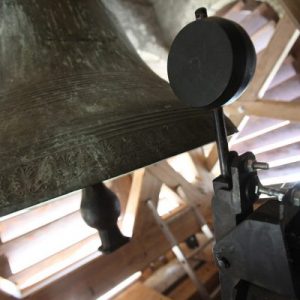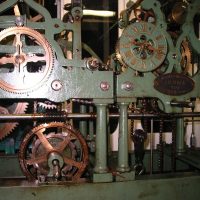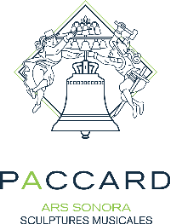
Bell services
More than 200 years of experience in the service of the bell tower
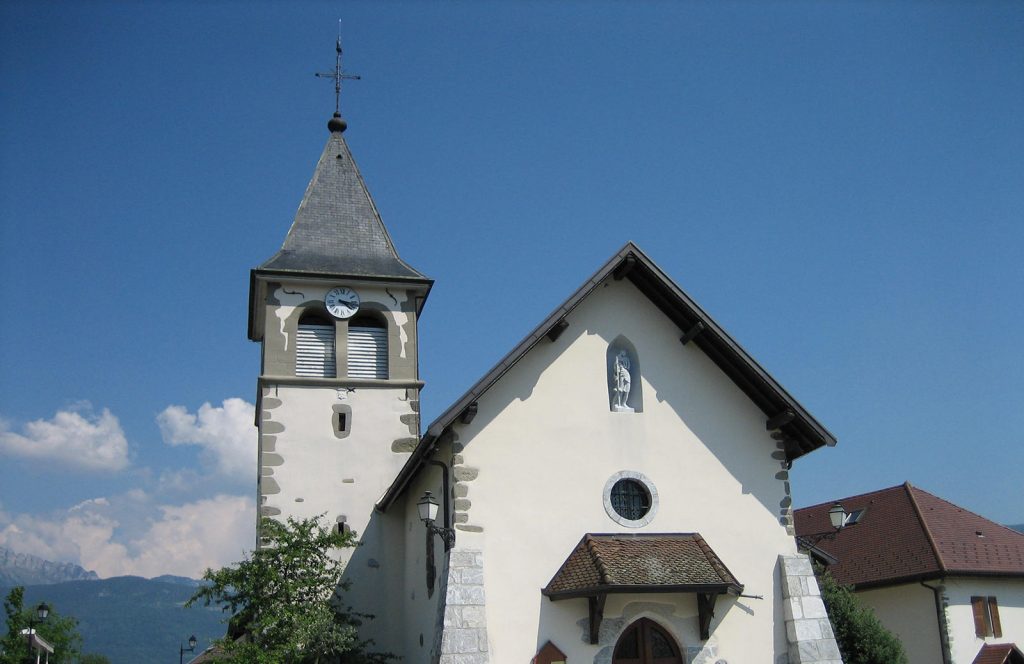
PACCARD specialises in the engineering of bell towers (civil or religious) and installs equipment used to ring bells (clapper, yoke, belfry…).
Bell maker is firstly a trade. The designation of this trade is as contemporary as it is ancient. The word « Bell maker » covers a wide diversity of trades :
- Carpenter for the installation of belfries and wooden structures,
- Clockmaker for the mechanism,
- Mechanic for the installation of clappers and yokes,
- Electrical engineer for the motors and electric operations,
- Electrician for all the electric installations,
- Electronics engineer especially for programmed automatic control systems,
- Restorer of old mechanism.
This notion covers so many different specialities, that it was necessary to find a word to name it. It was sometimes called as « bell tower repairer ». Until a « bell maker », Mr. Laumaillé, with tenacity, managed to get it into the dictionary around 2005.
There are different kinds of yokes, the use of which varies both by region and by the constraints imposed by the bell tower.
Depending on local traditions, the volume, the size of the bells, the resistance of the belfry, the bell maker has to choose a wooden yoke in a thrown mode, a metal yoke in a retro system or a balanced retro wooden yoke.
What is a belfry ?
The belfry is the structure – made of wood or metal – that supports the weight of the bells and allows them to be rung on the fly (moving bells) or tinkled (stationary bells). It allows the bells to be isolated from the walls of the bell tower, in order to protect this from the – sometimes very violent – forces developed by the moving bell(s).
Usually the belfry is inside the bell tower, but not always. Thus in the North of France – cradle of the carillons of Flemish model – belfries are found in « civil » towers which, by extension are also named belfries. The most popular bell tower is maybe today that of Bergues, made famous by the film « Bienvenue chez les Ch’tis » and which houses a PACCARD carillon of 48 bells.
The importance of the belfry in the protection of the bell making heritage
That is why, for all bell making works, it is important to call on a bell maker, a technician specialising in the installation and maintenance of the bell and its equipments.
PACCARD, in addition to being a bell founder from father to son since 1796, has been designing, installing and maintening belfries and bell towers all over the world for more than 200 years, with respect for each regional particularity. PACCARD takes part throughout the Rhône Alpes for the study, the installation or the maintenance of our bell making heritage.
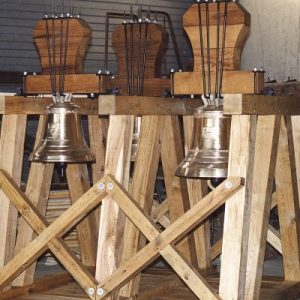
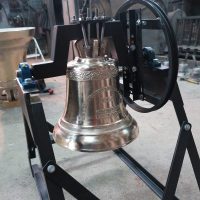
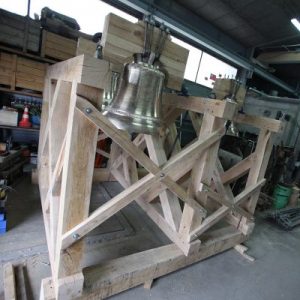

The ringing
The bell having been assembled and installed in the bell tower, it is now time to ring it.
The ringing is the simplest way to make a bell ring. This is fixed and remains unmoving, the bell-ringer hits it with a metallic hammer on the outside. The bell ringer can also pull the clapper by a rope attached to its extremity.
The peal is the regular swinging of the bell suspended from its yoke in accordance with local traditions. This movement is always horizontal. In Northern Italy and England, the bells are raised towards the sky and fall one after the other in a succession of arpeggios or fragments of a scale from high to low : this is « change ringing ». In Spain, the local speciality is the « swinging peal » a ringing mode in which the bell makes a complete turn on itself.
Nowadays, the ringing of a bell is electrically controlled.
The horology
The bell having been assembled and installed in the bell tower, it is now time to ring it.
The ringing is the simplest way to make a bell ring. This is fixed and remains unmoving, the bell-ringer hits it with a metallic hammer on the outside. The bell ringer can also pull the clapper by a rope attached to its extremity.
The peal is the regular swinging of the bell suspended from its yoke in accordance with local traditions. This movement is always horizontal. In Northern Italy and England, the bells are raised towards the sky and fall one after the other in a succession of arpeggios or fragments of a scale from high to low : this is « change ringing ». In Spain, the local speciality is the « swinging peal » a ringing mode in which the bell makes a complete turn on itself.
Nowadays, the ringing of a bell is electrically controlled.
